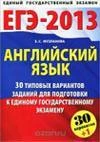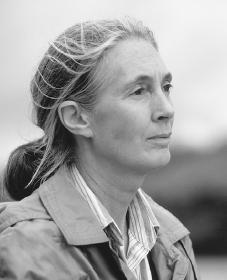- Подробности
-
22227
 |
||
|
Прочитайте текст. Заполните пропуски в предложениях под номерами В4-В10 соответствующими формами слов, напечатанных заглавными буквами справа от каждого предложения. TEST 02 (part 1) |
Choosing a Career
|
B4 |
Jane had always wanted to be a nurse and help ……………… in need. Her father, however, thought that nursing was not a suitable profession for her. |
PERSON |
|
B5 |
When she left school, she ……………… a job as a doctor’s receptionist. |
OFFER |
|
B6 |
Jane ……………… to take the job, so she decided to talk to her friend Ann about what she should do. |
NOT WANT |
|
B7 |
When Jane came to Ann’s house, Ann met her in the garden. ‘Hello, Jane! You look so unhappy! What ……………… (you) about?’ |
THINK |
|
B8 |
While Jane ……………… her problem, Ann’s mother shouted to the girls to come over. |
EXPLAIN |
|
B9 |
She said that Ann’s father ……………… an accident and he was in hospital. |
HAVE |
|
B10 |
When they arrived at the hospital, Jane was amazed to see her father ……………… on the bed in a very good mood. ‘Oh, Jane, the nurses here are really wonderful. And I think …’ Jane smiled. She knew what her father was going to tell her. |
SIT |
Posted by: a2cristina | April 3, 2014
CLOZE TEST
Read the text and complete the chart below with a word from the list that comes after the text. Every word can only be used ONCE. There are five words that you do not need to use. Question 0 has been answered as an example.
JANE GOODALL
Jane Goodall was born in London, England, in 1934 to Mortimer Herbert Morris-Goodall, a businessman, and Margaret Myfanwe Joseph, a novelist whose 0) __________ name was Vanne Morris-Goodall. 1) __________ a child, she was given a lifelike chimpanzee toy named Jubilee by her father; her 2) __________ for the toy started her early love of animals. Today, the toy still sits on her dresser in London. As she writes in her book, Reason for Hope: “My mother’s friends were horrified by this toy, thinking it would frighten me and give me nightmares.” Goodall has a sister, Judith, who shares the same birthday, 3) __________ the two were born four years apart.
Goodall had always been passionate about animals and Africa, which brought her to the farm of a friend in the Kenya highlands in 1957. From there, she obtained 4) __________ as a secretary, and acting on her friend’s advice, she telephoned Louis Leakey, a Kenyan archaeologist and palaeontologist, with no 5) __________ thought than to make an appointment to discuss animals. Leakey, believing that the study of existing great apes could 6) __________ indications of the behaviour of early hominids, was looking for a chimpanzee researcher, although he kept the idea to himself. Instead, he proposed that Goodall work for him as a secretary. 7) __________ obtaining his wife Mary Leakey’s approval, Louis sent Goodall to Olduvai Gorge in Tanzania, where he laid out his plans.
In 1958, Leakey sent Goodall to London to study primate behaviour with Osman Hill and primate anatomy with John Napier. Leakey raised 
Leakey arranged funding and in 1962, he sent Goodall, who had no 9) __________, to Cambridge University where she obtained a PhD degree in Ethology. She became only the eighth person to be 10) __________ to study for a PhD there without first obtaining a BA or B.Sc.. Her thesis was completed in 1965 under the tutorship of Robert Hinde, former master of St. John’s College, Cambridge, titled “Behaviour of the Free-Ranging Chimpanzee,” detailing her first five years of study at the Gombe Reserve.
Adapted from: http://en.wikipedia.org/wiki/Jane_Goodall
AFTER DEGREE JOB PREVENTED
ALLOWED FONDNESS OTHER PROVIDE
AS FUNDS PEN THOUGH
CAREER HOWEVER PERMIT WORK
0) PEN
KEY
1. AS
2. FONDNESS
3. THOUGH
4. WORK
5. OTHER
6. PROVIDE
7. AFTER
8. FUNDS
9. DEGREE
10. ALLOWED
Born: April 3, 1934
London, England
English primatologist and scientist
Jane Goodall was a pioneering English primatologist (a person who studies
primates, which is a group of animals that includes human beings, apes,
monkeys, and others). Her methods of studying animals in the wild, which
emphasized patient observation over long periods of time of both social
groups and individual animals, changed not only how chimpanzees (a kind of
ape) as a species are understood, but also how studies of many different
kinds of animals are carried out.
Childhood
The older of two sisters, Jane Goodall was born on April 3, 1934, in
London, England, into a middle-class British family. Her
father, Mortimer Herbert Morris-Goodall, was an engineer. Her mother,
Vanna (Joseph) Morris-Goodall, was a successful novelist. When Goodall
was about two years old her mother gave her a stuffed toy chimpanzee,
which Goodall still possesses to this day. She was a good student, but
she had more interest in being outdoors and learning about animals. Once
she spent five hours in a hen-house so she could see how a hen lays an
egg. She loved animals so much that by the time she was ten or eleven
she dreamed of living with animals in Africa. Her mother encouraged
Goodall’s dream, which eventually became a reality.
When Goodall was eighteen she completed secondary school and began
working. She worked as a secretary, as an assistant editor in a film
studio, and as a waitress, trying to save enough money to make her first
trip to Africa.
An African adventure begins
Jane Goodall finally went to Africa when she was twenty-three years old.
In 1957 she sailed to Mombasa on the east African coast, where she met
anthropologist Louis Leakey (1903–1972), who would become her
mentor, or teacher. In Africa, Leakey and his wife, Mary, had discovered
what were then the oldest known human remains. These discoveries
supported Leakey’s claim that the origins of the human species
were in Africa, not in Asia or Europe as many had believed.
Leakey hoped that studies of the primate species most closely related to
human beings—chimpanzees, gorillas, and orangutans—would
shed light on the behavior of the human animal’s ancestors. He
chose Goodall for this work because he believed
Jane Goodall.
Reproduced by permission of the
Corbis Corporation
.
that as a woman she would be more patient and careful than a male
observer, and that as someone with little formal training she would be
more likely to describe what she saw rather than what she thought she
should be seeing.
Living among chimps
In July 1960, twenty-six-year-old Jane Goodall set out for the first
time for Gombe National Park in southeastern Africa to begin a study of
the chimpanzees that lived in the forests along the shores of Lake
Tanganyika. She had little formal training; still, she brought to her
work her love of animals, a strong sense of determination, and a desire
for adventure. She thought at the time that the study might take three
years. She ended up staying for more than two decades.
In her earliest days at Gombe, Goodall worked alone or with native
guides. She spent long hours working to gain the trust of the
chimpanzees, tracking them through the dense forests and gradually
moving closer and closer to the chimps until she could sit among
them—a feat that had not been achieved by other scientists. Her
patience produced an amazing set of discoveries about the behaviors and
social relations of chimpanzees.
Chimpanzees had been thought to be violent, aggressive animals with
crude social arrangements. Researchers had given chimps numbers rather
than names and had ignored the differences in personality, intelligence,
and social skills that Goodall’s studies revealed. Chimpanzees,
Goodall showed, organized themselves in groups that had complex social
structures. They were often loving and careful parents and also formed
attachments to their peers. They hunted and ate meat. And they used
simple tools—twigs or grasses that they stripped of leaves and
used to get termites out of termite mounds. This discovery helped force
scientists to give up their definition of human beings as the only
animals that use tools.
In 1962 Leakey arranged for Goodall to work on a doctorate degree at
Cambridge University, in England, which would give scientific weight to
her discoveries. In 1965 she became the eighth person ever to receive a
doctorate from Cambridge without having earned an undergraduate degree.
By 1964 the Gombe Stream Research Center had become the destination of
choice for graduate students and other scientists wishing to study
chimpanzees or to learn Goodall’s methods. The general public was
also learning about Goodall’s work through a series of articles
in
National Geographic
magazine and later through
National Geographic
television specials. In 1964 Goodall married Hugo Van Lawick, a Dutch
wildlife photographer who had come to Gombe at the invitation of Leakey
to take pictures for the magazine. Goodall’s son by that
marriage, Hugo (more often referred to as Grub), was her only child.
New discoveries
The 1970s saw changes in Goodall’s understanding of the
chimpanzees and in the way in which research was carried out at Gombe.
In 1974 what Goodall referred to as a «war» broke out
between two groups of chimpanzees. One group eventually killed many
members of the other group. Goodall also witnessed a series of acts of
infanticide (the killing of an infant) on the part of one of the older
female chimps. These appearances of the darker side of chimpanzee
behavior forced her to adjust her interpretation of these animals as
being basically gentle and peace loving.
In May 1975 rebels from Zaire, Africa, kidnapped four research
assistants from the research center. After months of talks, the
assistants were returned. Because of the continued risk of kidnappings,
almost all of the European and American researchers left Gombe. Goodall
continued to carry out her work with the help of local people who had
been trained to conduct research.
A chimp’s true friend
Later Goodall turned her attention to the problem of captive
chimpanzees. Because
they closely resemble humans, chimpanzees have been widely used as
laboratory animals to study human diseases. Goodall used her knowledge
and fame to work to set limits on the number of animals used in such
experiments and to convince researchers to improve the conditions under
which the animals were kept. She also worked to improve conditions for
zoo animals and for conservation of chimpanzee habitats (the places in
the wild where chimps live). In 1986 she helped found the Committee for
the Conservation and Care of Chimpanzees, an organization dedicated to
these issues. She has even written children’s books,
The Chimpanzee Family Book
and
With Love,
on the subject of treating animals kindly.
For her efforts Godall has received many awards and honors, among them
the Gold Medal of Conservation from the San Diego Zoological Society,
the J. Paul Getty Wildlife Conservation Prize, and the National
Geographic Society Centennial Award. In 2000 she accepted the third
Gandhi/King Award for Non Violence at the United Nations. Much of
Goodall’s current work is carried on by the Jane Goodall
Institute for Wildlife Research, Education, and Conservation, in
Ridgefield, Connecticut. She does not spend much time in Africa anymore;
rather, she gives speeches throughout the world and spends as many as
three hundred days a year traveling.
For More Information
Goodall, Jane.
The Chimpanzees I Love: Saving Their World and Ours.
New York: Scholastic Press, 2001.
Goodall, Jane.
My Life with the Wild Chimpanzees.
New York: Pocket Books, 1988.
Haraway, Donna.
Primate Visions.
New York: Routledge, 1989.
Meachum, Virginia.
Jane Goodall, Protector of Chimpanzees.
Springfield, NJ: Enslow Publishers, 1997.
Pratt, Paula Bryant.
Jane Goodall.
San Diego, CA: Lucent Books, 1997.


